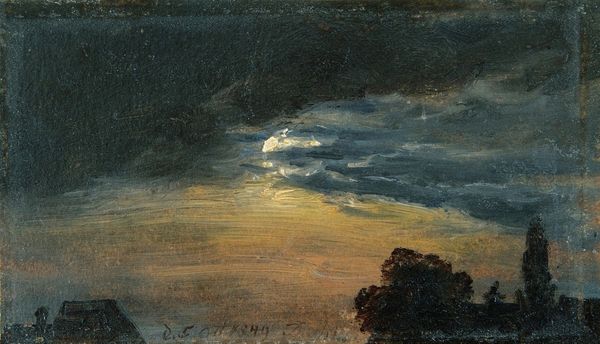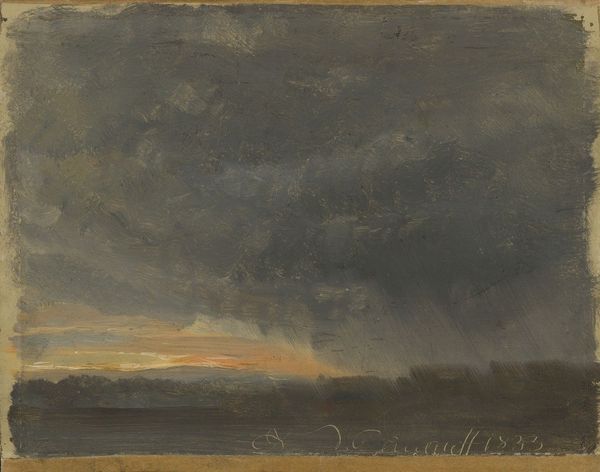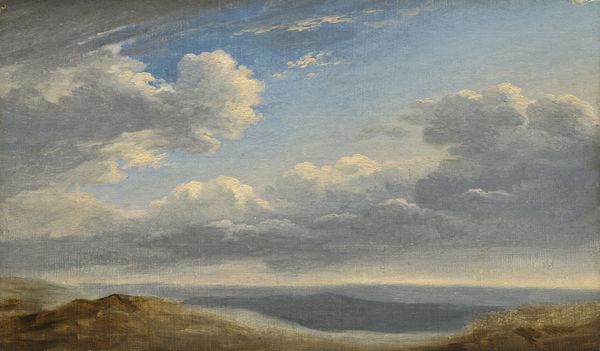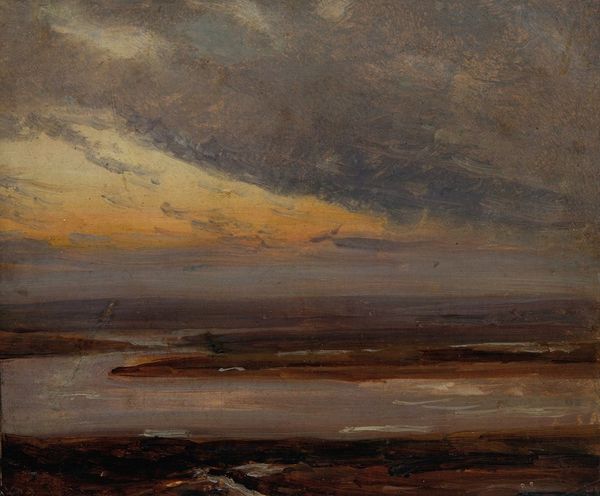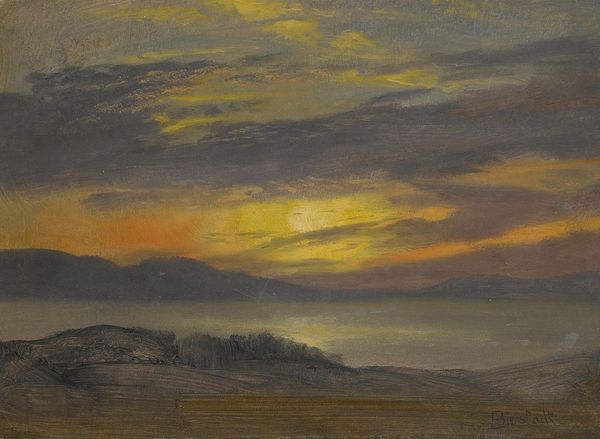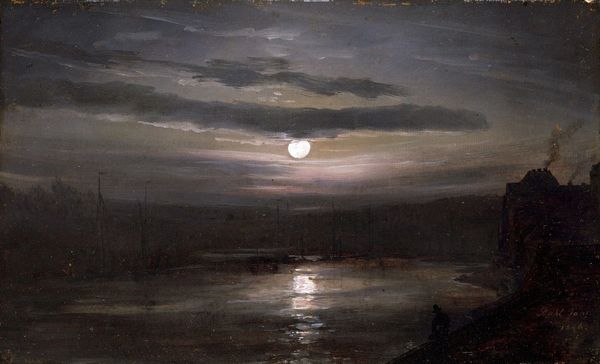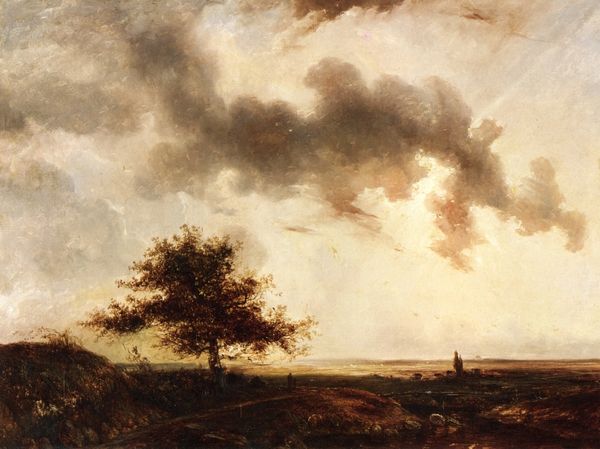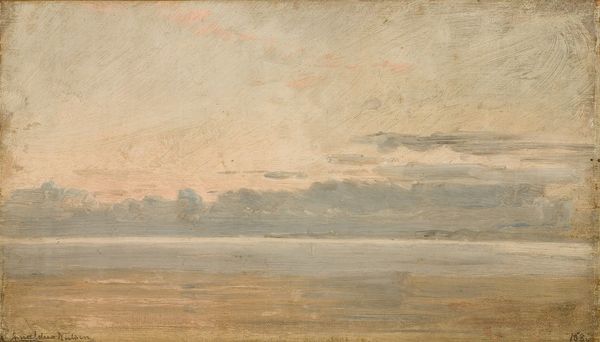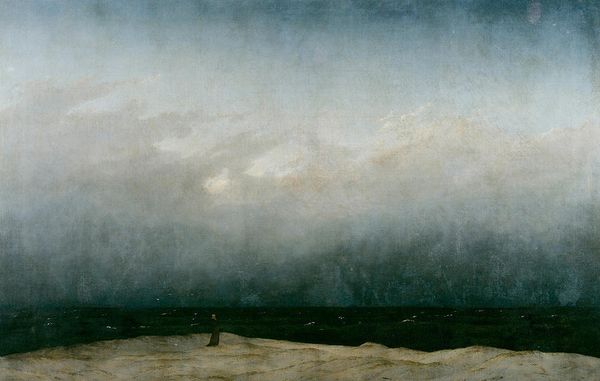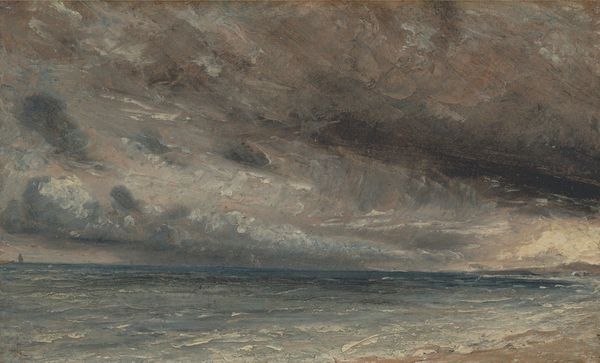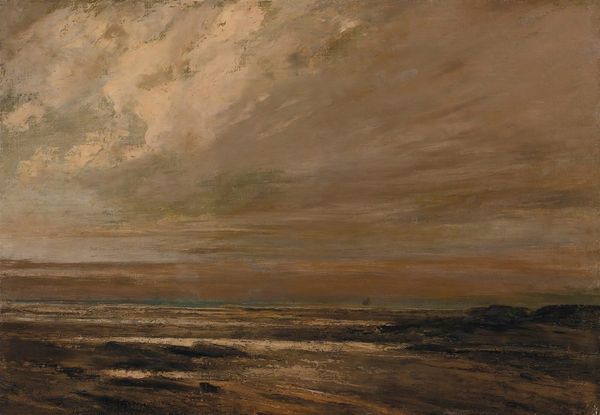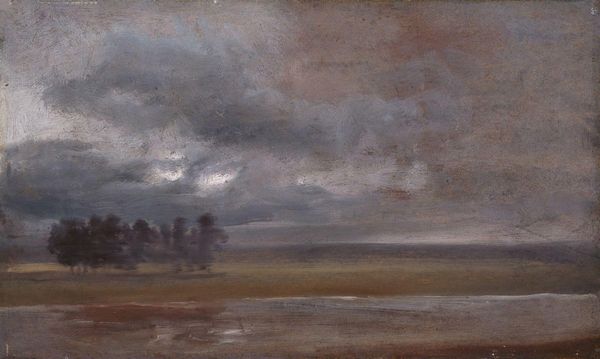
painting, oil-paint, canvas
#
painting
#
oil-paint
#
landscape
#
charcoal drawing
#
canvas
#
romanticism
#
cityscape
#
charcoal
#
watercolor
Dimensions: 14.5 cm (height) x 21.5 cm (width) (Netto)
Editor: Standing before "Moonlight over the Sea," painted by J.C. Dahl sometime between 1820 and 1834, one is struck by its somber mood. The composition is dominated by dark tones, and you can make out an oil-on-canvas execution. How might we interpret this arrangement of form and tone? Curator: The dominance of dark tones immediately calls our attention to Dahl's deliberate manipulation of light and shadow. Note how the moon, though partially obscured, serves as the painting's primary focal point. How does its luminescence interact with the turbulent, textured brushstrokes in the sky? Editor: It creates a real contrast! The smoothness of the moon and its reflection is such a distinct break from the chaos of the sky around it. Curator: Precisely. The interplay of smooth and rough textures contributes to the overall dynamism. Furthermore, consider the horizontal division of the composition—the sky, the sea, and the distant land. How does this structuring contribute to the painting's emotional weight? Editor: I see how the strong horizontals could add to the feeling of stillness or calm beneath the drama in the sky. Do you think the artist sought to balance order and chaos in some way? Curator: Indeed. The structural organization of the piece provides a framework within which the Romantic interest in dramatic expression plays out. It is in this tension that much of the painting’s formal interest lies. Editor: I see now how Dahl uses visual elements to evoke a certain mood or feeling. Curator: Yes, and how a focus on compositional structure provides access into broader understanding.
Comments
No comments
Be the first to comment and join the conversation on the ultimate creative platform.
